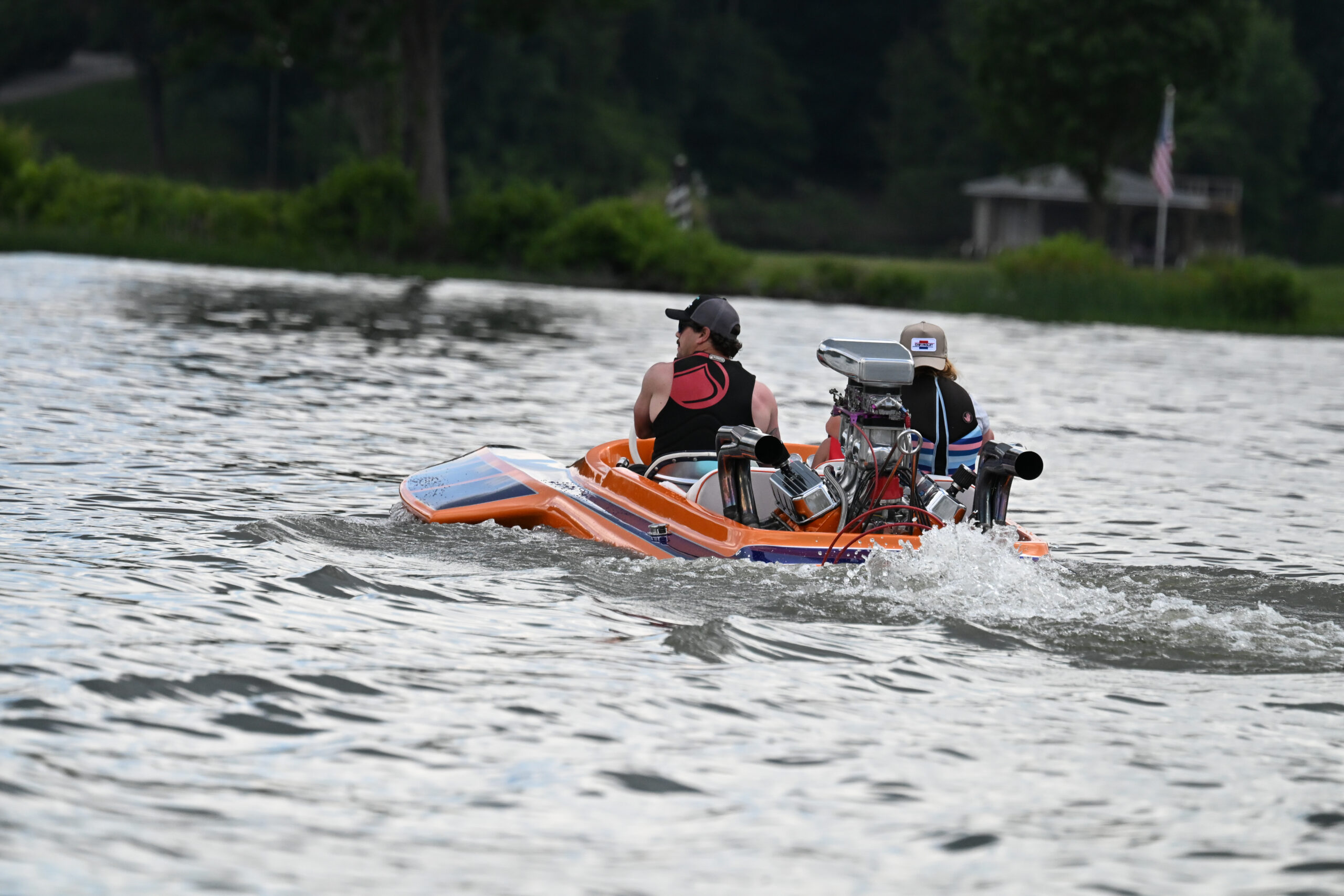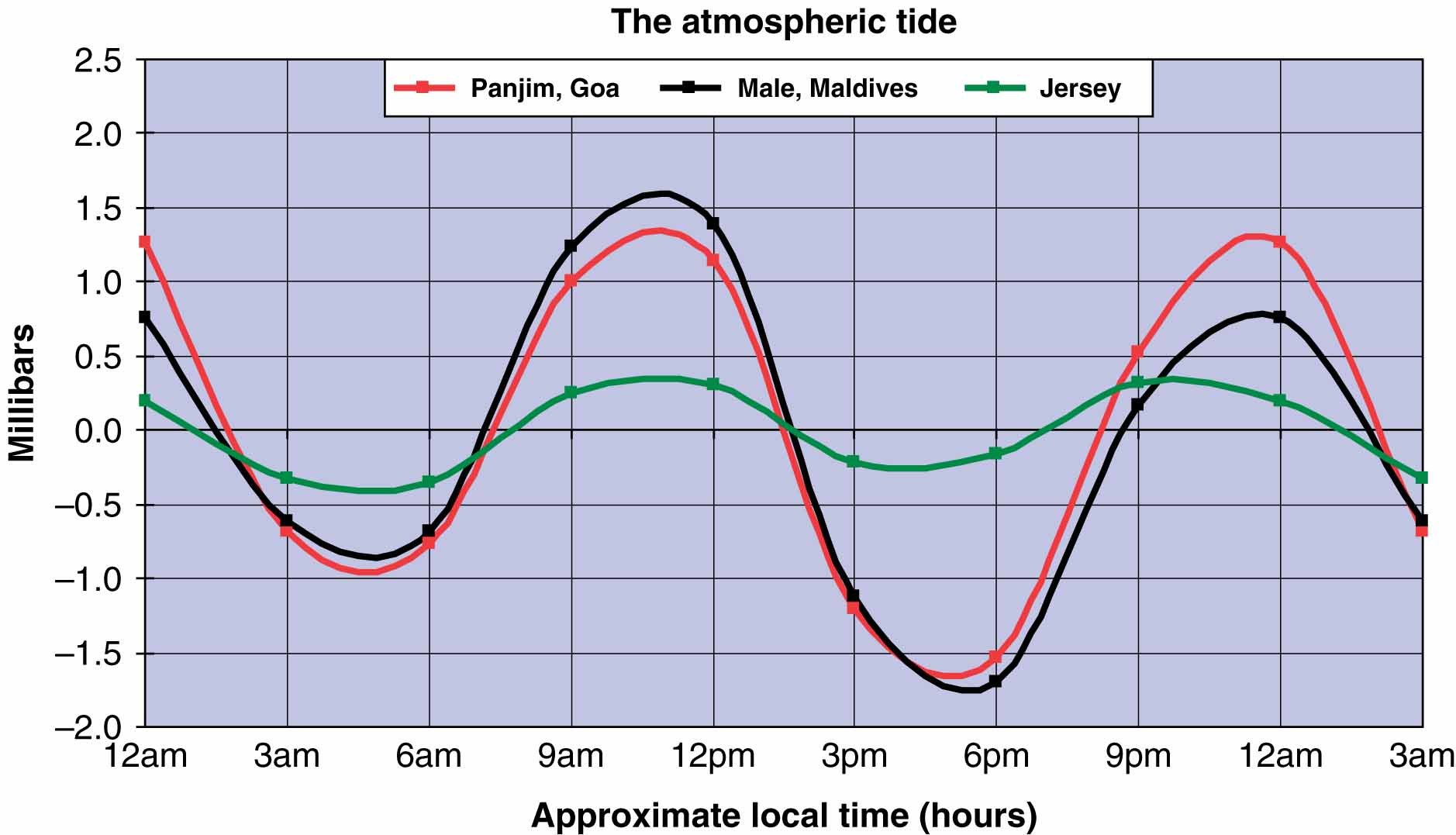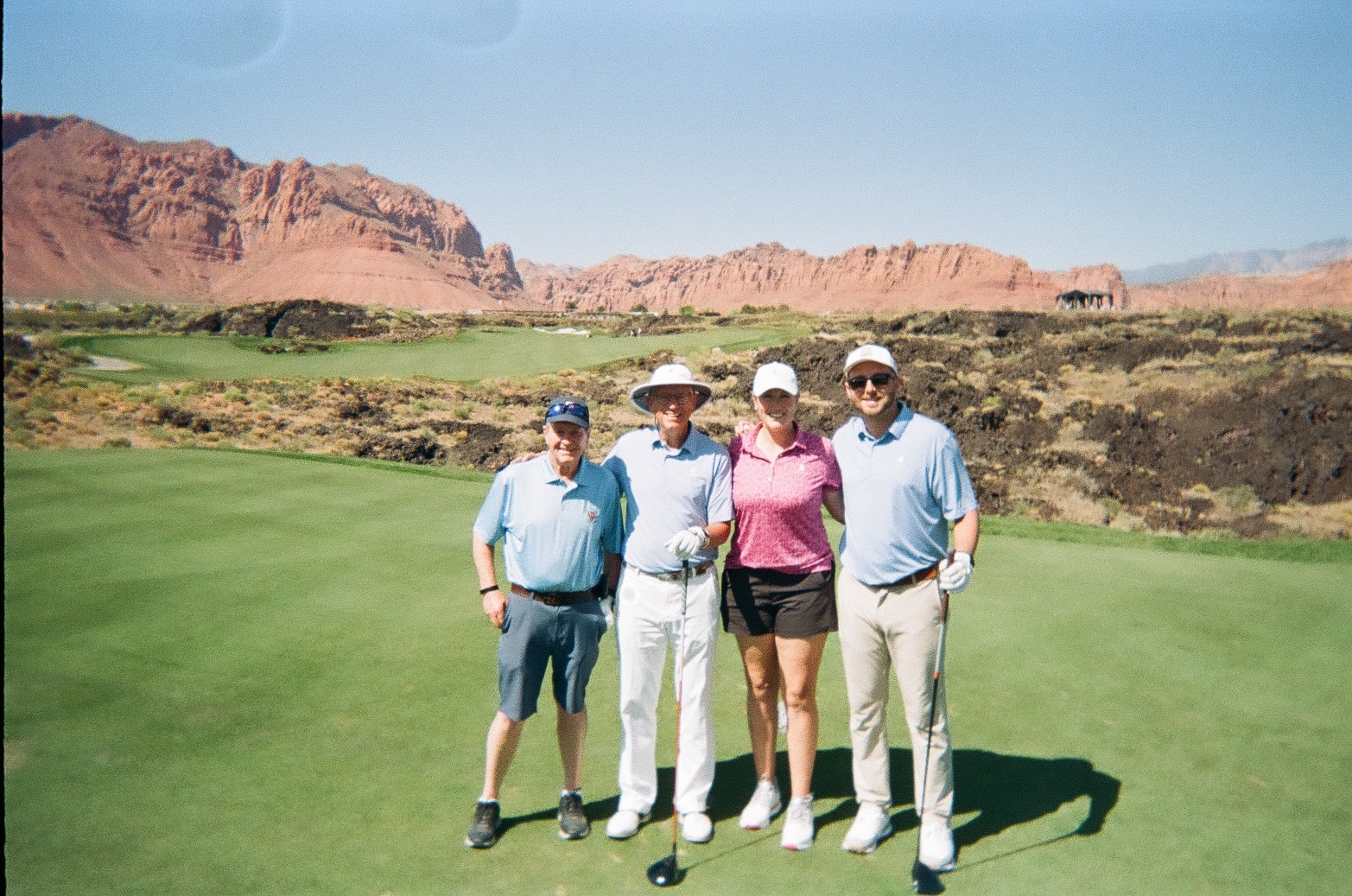Article by Jack Snyder, Director of Golf and Instruction at Cutalong
Warm weather, more extended daylight, and the “Master’s” Tournament mark the beginning of another year for the avid golfer. With each passing year comes the hope for a better than last year’s adventure out on the links. It will never happen by accident or divine intervention; it will only come with some practice and patience. So let me help you make this year an improvement on last year and help you to manage your expectations better.
Most people begin by trying to hit the ball slightly farther than they did. They start swinging harder, and the result is typically that the ball goes farther out of play, and they have lost a ball. After much frustration and fatigue, they swing less hard, and what do you know, the ball just jumped off the face of the club and went farther than usual. Then, after seeing that, the thought crosses their mind that if I hit it that far, not swinging hard, think how far I can hit it if I swing harder, and now they are back at the beginning of this project.
Golf can be somewhat counter-intuitive. Swinging less hard and making center contact with the face of the club will produce the most efficient shot and the most distance. Sure, if you can do this and swing faster, it will go further, but that is only for the trained professionals, who mis-hit and send the ball deep into the galleries to watch them. I want you to swing consistently, with rhythm and balance. How you do this will be your own personal style and ability. Find this, and you will be well on your way to successfully striking the ball and sending it in the general direction you desire. So, if the finest players in the world can’t control their ball consistently, why should we think that we can? And if you are going to have some poor shots, how can you lower your overall scores successfully? Read on.
Your ability to get the ball into the hole in the fewest strokes possible should always be your objective. That one “Miracle Shot” was a miracle, and they don’t happen very often. When they do, you are on top of the world; when they don’t, you pick the ball up in disgust and move on to the next hole. What the best players in the world do better than anyone is get the ball up and down from 50 yards and in almost every time. They practice many more hours on their short game than their full game. It’s not glamorous, but it pays the bills.
You can practice this anywhere you have a space of 50 yards or less. Place objects on the ground 10-20-30-40-50 yards away and practice hitting pitches and chips to each spot. Use your pitching wedge, gap wedge, sand wedge, and lob wedge to do so, knowing that each club with its relative height will either roll out or land softly. Good form, balance, and posture will allow you to become consistent.
Pay attention to how much swing is required to send the ball each distance and feel the rhythm of each swing internally. Golf is a still ball game, so it is quite essential to place the ball consistently in your stance, so the bottom of your swing arc matches the bottom of the golf ball. Yes, for the ball to go up into the air, you must strike the bottom of the ball. This allows the loft or angle of the clubface to send the ball, and there should not be an effort on your part to help lift the ball into the air.
The ball goes up due to a deflection with the clubface as it moves under the ball. There is no need to take a gouging divot either; allow the clubface to swing along the ground under the ball. Below are instructions on how to practice your swing. Here’s what I’d like you to do:
6 Steps to a More Consistent Golf Score
1) Stand tall, bend slightly from the waist, push your hips back as your torso moves toward the ground, and let your arms hang relaxedly from your shoulders, allowing the club to rest on the ground.
2) You should feel slightly more weight on your forward foot, the foot closest to your target, and your stance should be slightly to open moderately.
3) The ball should be placed at the bottom or slightly ahead of the bottom of your swing arc. A few practice swings should show you this, but generally, it will be slightly ahead of your sternum.
4) The motion will be relaxed, less than a waist-high backswing, with little movement in your feet and legs.
5) Your body’s forward motion will be more active as you rotate it toward the target, allowing your hands and arms to move with it. This is not an all-arm stab at the ball but a swinging motion of the arms in a coordinated sequence with the body.
6) The rhythm of this motion and the club you choose to perform the swing will dictate the loft and the amount of roll.
Don’t make this complicated; it is similar to an underhand toss. When you perform an underhand toss, you do so in a sequence that coordinates your body with your arm. Your eyes tell your body the effort level necessary; it’s that simple. Now, when you miss a green, you will have more confidence in getting the ball close to the hole and then making the putt.

Hi! I’m Jennifer Bailey and I partner with entrepreneurs who have massive ideas that could change the world. Most marketing is meaningless. Filled with empty promises, its only job is to bring in new traffic, new leads, and new customers. But I’ve drawn a line in the sand, and I’ve learned that marketing can do so much more than reach business goals and build profit. My methods give businesses the fire and soul they need to reach the right people, set the groundwork for sustainable relationships, and offer true value to the people on both the giving and receiving ends of marketing.
Subscribe for Updates
Sponsors
latest articles
Plan Ahead for a Safe and Sober Holiday Weekend on the Water [Photo Gallery]
![Featured image for “Plan Ahead for a Safe and Sober Holiday Weekend on the Water [Photo Gallery]”](https://lakeanna.online/wp-content/uploads/2025/06/DFW-RIde-Along-8104.jpg)
Fully Community-Funded Rescue Boat Brings Life-Saving Power to the Water

[Sponsored] Holmes on Homes: Business Built on Trust, Grit and Quality
![Featured image for “[Sponsored] Holmes on Homes: Business Built on Trust, Grit and Quality”](https://lakeanna.online/wp-content/uploads/2025/06/FinalHolmes-1.jpg)
Jet Boat Community Celebrates Service and Safety at 2025 Lake Anna Invasion

Best of Lake Anna Corrections & Announcements

Barometric Tides, Explained

Article by Jack Snyder, Director of Golf and Instruction at Cutalong
Warm weather, more extended daylight, and the “Master’s” Tournament mark the beginning of another year for the avid golfer. With each passing year comes the hope for a better than last year’s adventure out on the links. It will never happen by accident or divine intervention; it will only come with some practice and patience. So let me help you make this year an improvement on last year and help you to manage your expectations better.
Most people begin by trying to hit the ball slightly farther than they did. They start swinging harder, and the result is typically that the ball goes farther out of play, and they have lost a ball. After much frustration and fatigue, they swing less hard, and what do you know, the ball just jumped off the face of the club and went farther than usual. Then, after seeing that, the thought crosses their mind that if I hit it that far, not swinging hard, think how far I can hit it if I swing harder, and now they are back at the beginning of this project.
Golf can be somewhat counter-intuitive. Swinging less hard and making center contact with the face of the club will produce the most efficient shot and the most distance. Sure, if you can do this and swing faster, it will go further, but that is only for the trained professionals, who mis-hit and send the ball deep into the galleries to watch them. I want you to swing consistently, with rhythm and balance. How you do this will be your own personal style and ability. Find this, and you will be well on your way to successfully striking the ball and sending it in the general direction you desire. So, if the finest players in the world can’t control their ball consistently, why should we think that we can? And if you are going to have some poor shots, how can you lower your overall scores successfully? Read on.
Your ability to get the ball into the hole in the fewest strokes possible should always be your objective. That one “Miracle Shot” was a miracle, and they don’t happen very often. When they do, you are on top of the world; when they don’t, you pick the ball up in disgust and move on to the next hole. What the best players in the world do better than anyone is get the ball up and down from 50 yards and in almost every time. They practice many more hours on their short game than their full game. It’s not glamorous, but it pays the bills.
You can practice this anywhere you have a space of 50 yards or less. Place objects on the ground 10-20-30-40-50 yards away and practice hitting pitches and chips to each spot. Use your pitching wedge, gap wedge, sand wedge, and lob wedge to do so, knowing that each club with its relative height will either roll out or land softly. Good form, balance, and posture will allow you to become consistent.
Pay attention to how much swing is required to send the ball each distance and feel the rhythm of each swing internally. Golf is a still ball game, so it is quite essential to place the ball consistently in your stance, so the bottom of your swing arc matches the bottom of the golf ball. Yes, for the ball to go up into the air, you must strike the bottom of the ball. This allows the loft or angle of the clubface to send the ball, and there should not be an effort on your part to help lift the ball into the air.
The ball goes up due to a deflection with the clubface as it moves under the ball. There is no need to take a gouging divot either; allow the clubface to swing along the ground under the ball. Below are instructions on how to practice your swing. Here’s what I’d like you to do:
6 Steps to a More Consistent Golf Score
1) Stand tall, bend slightly from the waist, push your hips back as your torso moves toward the ground, and let your arms hang relaxedly from your shoulders, allowing the club to rest on the ground.
2) You should feel slightly more weight on your forward foot, the foot closest to your target, and your stance should be slightly to open moderately.
3) The ball should be placed at the bottom or slightly ahead of the bottom of your swing arc. A few practice swings should show you this, but generally, it will be slightly ahead of your sternum.
4) The motion will be relaxed, less than a waist-high backswing, with little movement in your feet and legs.
5) Your body’s forward motion will be more active as you rotate it toward the target, allowing your hands and arms to move with it. This is not an all-arm stab at the ball but a swinging motion of the arms in a coordinated sequence with the body.
6) The rhythm of this motion and the club you choose to perform the swing will dictate the loft and the amount of roll.
Don’t make this complicated; it is similar to an underhand toss. When you perform an underhand toss, you do so in a sequence that coordinates your body with your arm. Your eyes tell your body the effort level necessary; it’s that simple. Now, when you miss a green, you will have more confidence in getting the ball close to the hole and then making the putt.

Hi! I’m Jennifer Bailey and I partner with entrepreneurs who have massive ideas that could change the world. Most marketing is meaningless. Filled with empty promises, its only job is to bring in new traffic, new leads, and new customers. But I’ve drawn a line in the sand, and I’ve learned that marketing can do so much more than reach business goals and build profit. My methods give businesses the fire and soul they need to reach the right people, set the groundwork for sustainable relationships, and offer true value to the people on both the giving and receiving ends of marketing.
Subscribe for Updates
Sponsors
latest articles
Plan Ahead for a Safe and Sober Holiday Weekend on the Water [Photo Gallery]
![Featured image for “Plan Ahead for a Safe and Sober Holiday Weekend on the Water [Photo Gallery]”](https://lakeanna.online/wp-content/uploads/2025/06/DFW-RIde-Along-8104.jpg)
Fully Community-Funded Rescue Boat Brings Life-Saving Power to the Water

[Sponsored] Holmes on Homes: Business Built on Trust, Grit and Quality
![Featured image for “[Sponsored] Holmes on Homes: Business Built on Trust, Grit and Quality”](https://lakeanna.online/wp-content/uploads/2025/06/FinalHolmes-1.jpg)
Jet Boat Community Celebrates Service and Safety at 2025 Lake Anna Invasion

Best of Lake Anna Corrections & Announcements

Barometric Tides, Explained


Belmont Ruritan Clubs Award $26,000 in Scholarships to Local Seniors
Article By Jen Bailey

Exclusive Golf Excursions for Cutalong Members
Article By Jen Bailey







